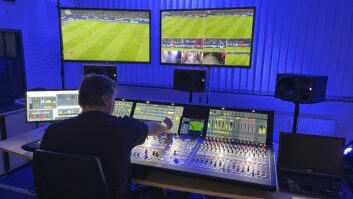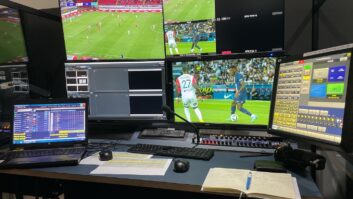
Should you entrust your income to a PC with a video card, asks Ed Casaccia, Grass Valley.
For commercial television broadcasters the playout system is absolutely mission critical, because it controls the way they earn revenue. A channel that is funded by advertisers paying for airtime needs to be absolutely certain that every booked spot is played out perfectly, because only a transmitted spot can be billed.
Make-goods – transmitting the spot again in a later break – just means you are giving your product (airtime) away for nothing. If your sales inventory is time, you really cannot afford to waste it.
So the playout system has to be as close to perfectly reliable as possible, to limit the number of defects in your product. Top broadcasters will talk about five nines: 99.999% availability in the playout chain. Even that staggeringly high reliability factor puts a channel output at risk for five minutes over the course of a year.
Now ask yourself what is the least reliable piece of equipment you own. And the answer will almost certainly come back: a PC. I am not just talking about a blue screen of death here. How many times do you find yourself asking your computer what is going on, when some new combination of circumstances causes it to do something unexpected? How much time do you waste finding new workarounds because of some odd response?
So for me the idea of entrusting your sole source of income as a broadcaster to a PC with a video card, however well developed the software, seems to be ripe for disaster.
That is not to say that IT products do not have a place in broadcast equipment, even in mission critical systems. Indeed, it would be foolish to ignore their potential, because commodity products offer excellent functionality at a very low cost that has been driven down through the mass market available to it.
But, I would argue, they have to be used within an overall system design that reflects the very different demands of broadcasting.
When we launched our new line of servers, K2, four years ago, Grass Valley placed great importance on the fact that some parts of the system were based on standard IT techniques and technologies: common commercially available disk drives, gigabit ethernet fabric, open standard protocols and so on.
Equally important, though, was the emphasis placed on the Grass Valley-designed, broadcast-specific, heavy duty hardware and software that delivered the performance and reliability that our professional users expect. It is only by using application-specific, well-designed equipment that you can deliver a new picture, in HD precisely every 40 milliseconds, and play multi-channel high fidelity sound without glitches or dropouts.
Application control
By all means do as we do and offer a PC environment as the front end. That gives the user a well-known and reasonably user-friendly operating system in which to develop applications. Perhaps more important, it means that the user interface to those applications looks like the Windows experience with which we are all familiar.
The important point to remember, though, is that in a broadcast server product that PC application control environment is abstracted from the heavy duty realtime system which runs in the background and is solely dedicated to pumping out that stream of bits and bytes at the right time and in the right order.
Proponents of the playout in a PC solution will point to price as their big advantage. But the price differential would have to be massive to cover the cost of just a couple of lost spots and the associated management time of recovering from them.
In practice there should be little difference in cost between the two approaches. Vendors offering a playout station based on a standard computer and video card – items with known price tags – have to recover their system development costs with the software licence. This software is likely to be complex to write and maintain because of the need to coax something like the required stability and realtime performance out of hardware not designed for it.
With a broadcast specific server the balance of cost is different: more hardware and the realtime operating system as well as the PC front end. But because the realtime operating system is very focussed on one application – video and audio replay – it is compact and in need of little upgrading and maintenance. Running on dedicated hardware with its own operating system, it is certainly not at the mercy of upgrades to PC technology that may help the office user but are a nightmare for this application.
With a few simple APIs the front end can be left to the user or the system integrator to develop the specific functionality required. The investment is in the right place.
When it is already hard enough for broadcasters to win advertising revenues, why would you want to put it at risk? Standard IT technology has much to offer the broadcast industry, but playout in a PC is not the way to pay the bills.







